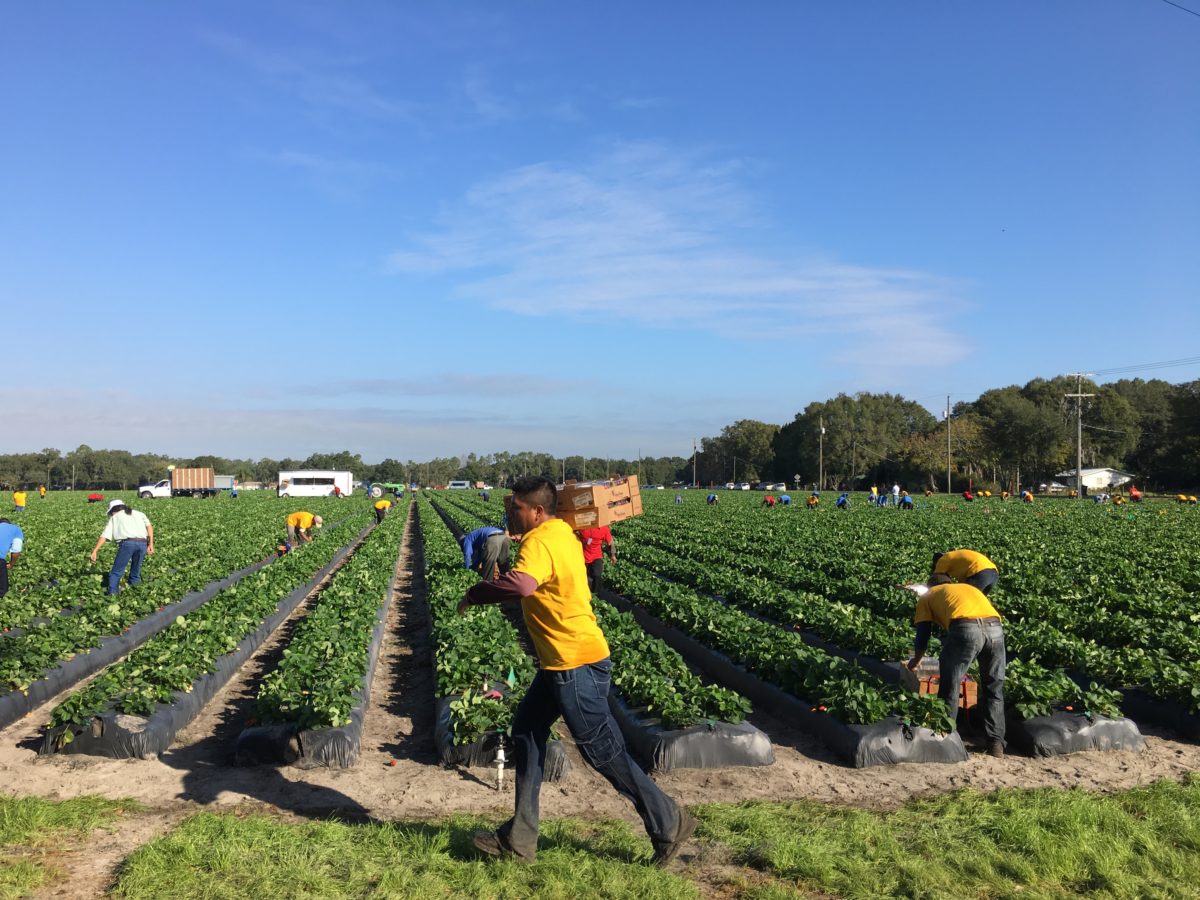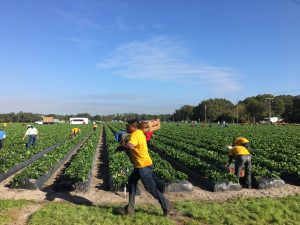Florida is a large supplier of fruits and vegetables in the United States. Major fruits and vegetables produced in Florida include citrus, strawberries, tomatoes, bell peppers, cantaloupes, watermelons, etc. The production and harvest of these crops are labor intensive. For example, University of Florida researchers estimate that harvesting 1 acre of oranges requires 50 hours. More than 200 hours of manual labor in production and harvesting are needed for 1 acre of fresh-market tomatoes, and 1 acre of strawberries needs 800 hours of manual labor.
It is estimated that the strawberry industry in Central Florida employs 15,000 farmworkers, while specialty crop growers in Southwest Florida, a major tomato and citrus production area, employ more than 16,000 farmworkers during the peak season. Statewide, the fresh tomato industry alone would require more than 30,000 workers. Running a business in this labor-intensive industry under the current market and policy environments, specialty crop growers are facing four major challenges: 1) labor shortages, 2) high percentage of unauthorized labor, 3) high labor costs and 4) a cumbersome and expensive guestworker program.
LABOR SHORTAGES
Labor shortages have been plaguing the industry for decades. The seasonal nature of agriculture means most temporary workers will be out of employment after the season and will likely need to find their next jobs with different employers. This reduces job security. Also, constantly moving around the country or state following crop seasons is just not feasible for many workers who need a stable environment for their families.
The physically intensive nature of agricultural work, especially in harvesting, further makes the job unattractive and reduces willingness to work in the industry. Most people choose other jobs if they have options. Growers have long been complaining that Americans are not willing to work in the field. In the peak season, the Florida strawberry industry lacks more than 30 percent of the labor force needed.
UNAUTHORIZED LABOR
Due to the low willingness of Americans or those with lawful permanent status, most field work in the specialty crop industry has been performed by undocumented workers. Data from the 2012 National Agricultural Workers Survey by the Department of Labor shows that 53 percent of farmworkers self-reported that they were not legally authorized to work in the United States. The latest data available does not show a significant change in the self-reported percentage. People believe the actual percentage is much higher than the self-reported numbers.
The high percentage of undocumented workers is posing both legal and economic risks to the industry. As the current administration is tightening border control and pursuing stricter enforcement of immigration policy, the number of undocumented workers is expected to decrease, which would exacerbate labor shortages and increase economic uncertainties for growers.
HIGH LABOR COSTS
Driven by labor shortages, labor costs — the largest expense for many specialty crops — have been increasing rapidly over the years. Labor costs in Florida strawberry production account for about 40 percent of the total costs. In every dollar of cost increases in strawberry production from 2008 to 2013, 44 cents were from escalating labor costs.
Compared to growers in Mexico, the major competitor in the fresh produce market, growers in the United States are at a significant cost disadvantage. The average wage rates of agricultural workers in Mexico are about $1 per hour, while the U.S. federal minimum wage is $7.25 per hour. The minimum wages of most states are higher than that ($8.25 in Florida, for example).
PROBLEMATIC GUESTWORKER PROGRAM
To address the serious labor shortage issue, growers are increasingly resorting to the H-2A guestworker program, despite the even higher wage rates mandated under this program. Florida is currently one of the states with the largest number of H-2A workers. The adverse effect wage rates (AEWR) for hiring guestworkers are significantly higher than the minimum wage rates in many states. In Florida, the AEWR rate is $11.29, which is 37 percent higher than the state’s minimum wage.
Additionally, this program requires that employers provide free housing and transportation, placing another major cost burden on growers. Many other rules of this program also make it cumbersome and expensive, defeating the very purpose of the program.
Zhengfei Guan is an assistant professor at the University of Florida Institute of Food and Agricultural Sciences Gulf Coast Research and Education Center in Wimauma, Florida.
This article was featured in the October issue of VSCNews magazine. To receive future issues of VSCNews magazine, click here.
Share this Post











